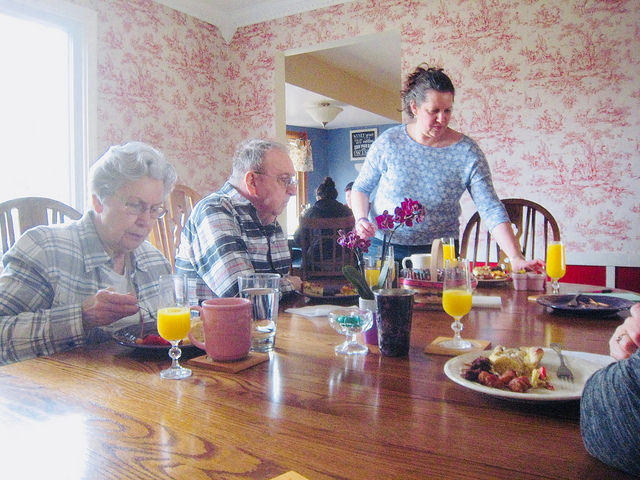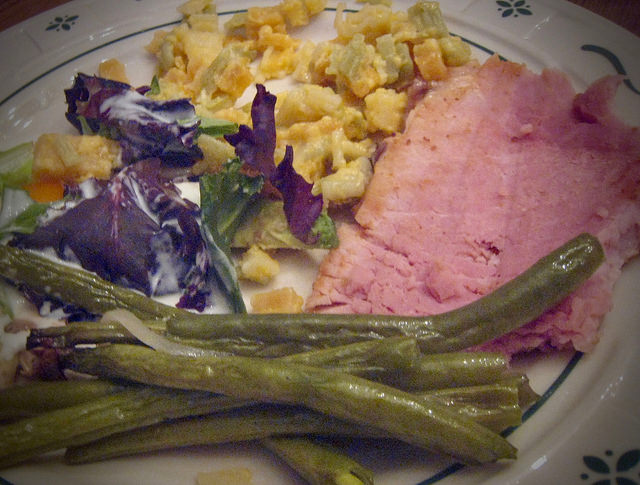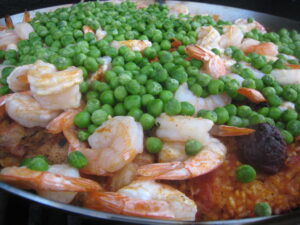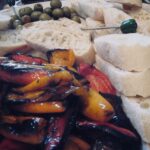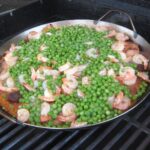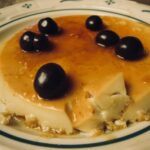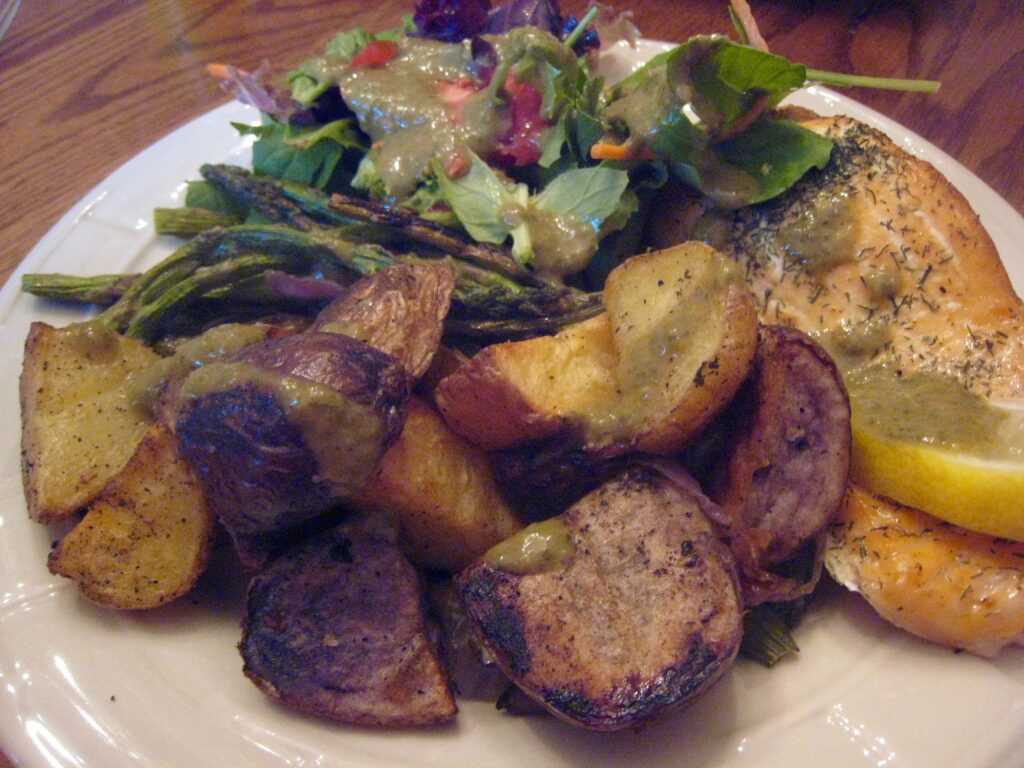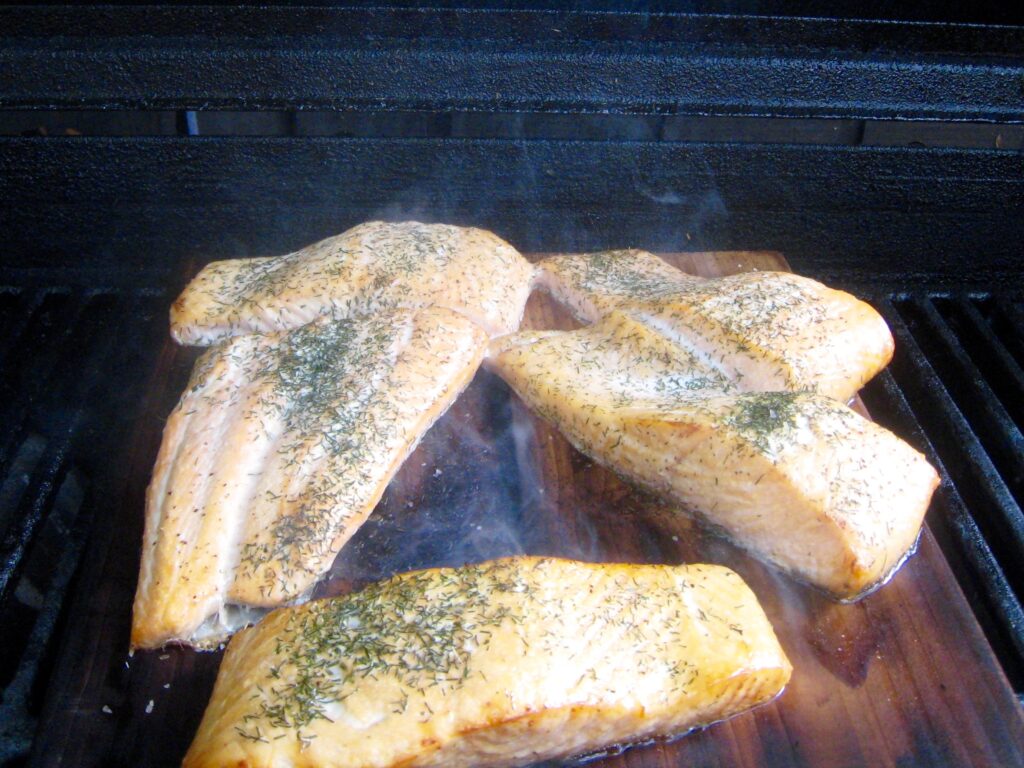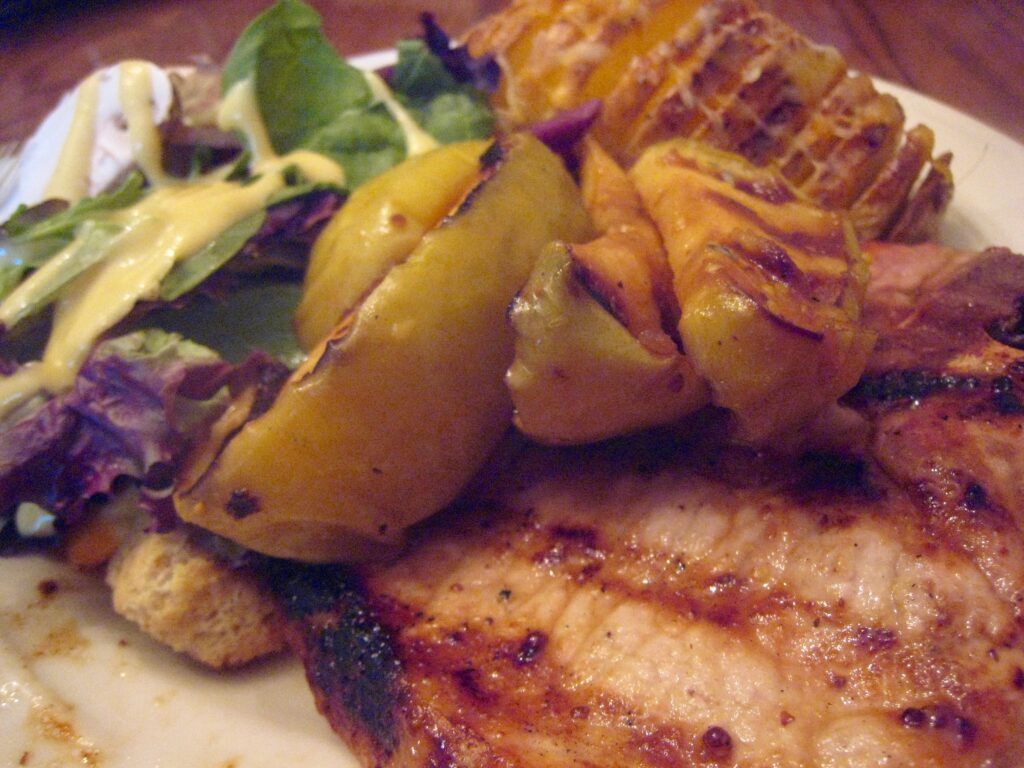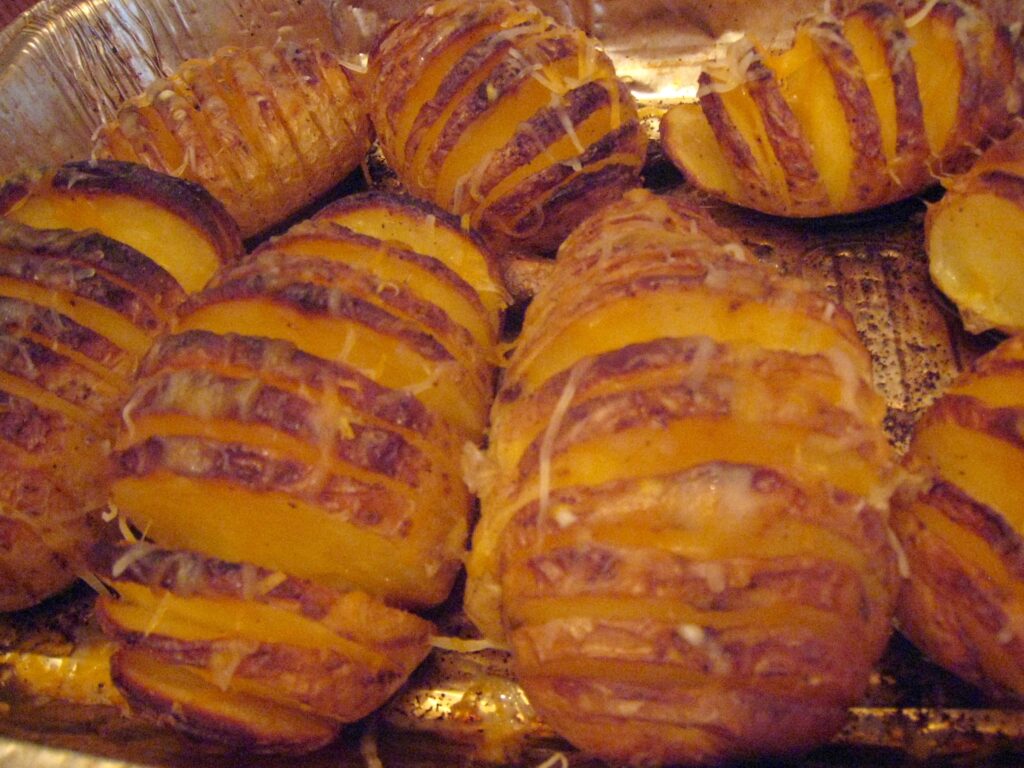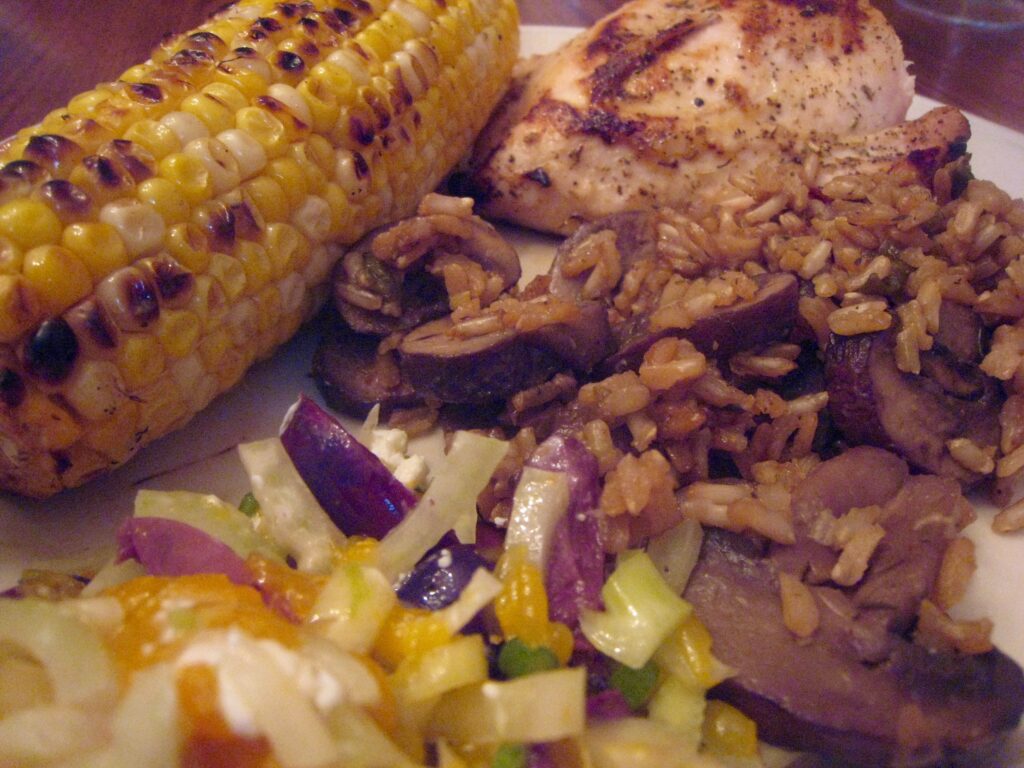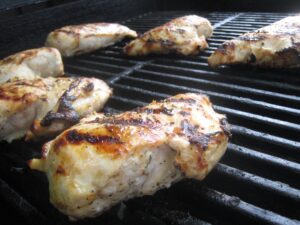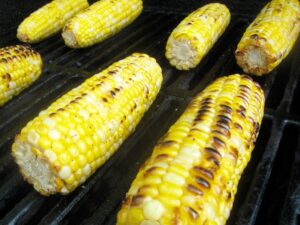We had Claudia’s folks and her sister’s family over for Easter this year. We started with Mimosas and Bloody Marys, and enjoyed a marvelous brunch including egg casserole, Kiełbasa, fresh fruits, baked goods and more.
Later in the day, we served ham, green beans, pasta and Wulff Salad.
The salad, by the way, is named for Claudia’s mom’s family. She learned to prepare this simple vinaigrette growing up. It’s unique in that the ingredients are added directly to the greens, one-by-one, rather than combining in a cruet first. It includes oil (she generally uses EVOO these days, but it could be any vegetable oil), vinegar (usually balsamic or red wine), salt, pepper and a bit of sugar. Nothing is measured, so far as I can tell.
I cook the ham on the grill each year, using Jamie Purviance’s Mustard-Molasses Glaze recipe from Weber’s Real Grilling. The first time I made this glaze, Claudia commented that it smelled like her grandma’s kitchen, which is about the highest compliment one can receive. Here’s the recipe.
- ½ cup stone-ground mustard
- ¼ cup unsulphured dark molasses
- ¼ cup fresh orange juice
- 1 teaspoon ground ginger
- ¼ teaspoon ground cloves
Combine these in a saucepan and simmer a bit.
Score a 10 pound, bone-in (butt end) cooked ham with cross hatches, and place it cut side down in a foil pan. I add a can of 7-Up or ginger ale to the pan, and grill over indirect medium heat for two or three hours, brushing with the glaze after an hour or so, and again toward the end of the cook. This year I cooked it on the Weber Genesis gas grill, adding a few chunks of apple wood to the smoker box.
Claudia had baked an assortment of sugar cookies and almond/oat cookies. And of course, there were hard boiled eggs galore.
I had been sick the prior week and had barely been eating, so I overdid with all of the delicious goodies in the morning, and didn’t really get to enjoy dinner. But the ham was wonderful for days on end. Claudia made grilled ham and Swiss sandwiches Monday evening, and we used the bone to flavor some incredible split pea soup later in the week.
